《国际商务民事法规通则 (1) 英文》
| 作者 | 美国加州大学,美国斯坦福大学法学院著 编者 |
|---|---|
| 出版 | 中央广播电视大学出版社 |
| 参考页数 | 347 |
| 出版时间 | 1997(求助前请核对) 目录预览 |
| ISBN号 | 7304013877 — 求助条款 |
| PDF编号 | 8623458(仅供预览,未存储实际文件) |
| 求助格式 | 扫描PDF(若分多册发行,每次仅能受理1册) |
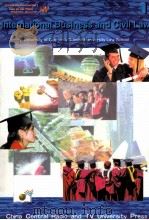
1Intellectual Property Law1
1.1Scope of the Term "Intellectual Property"1
1.1.1 Definition of Intellectual Property1
1.1.2 Types of Intellectual Property2
1.2Primary Intellectual Property Policy Issues4
1.2.1 Incentive vs.Competition4
1.2.2 Property vs.Monopoly5
1.2.3 Property Policy5
1.2.4 Natural Rights Policy6
1.2.5 Two Paradigms of Intellectual Property Law6
1.3Sources of Regulatory Authority8
1.3.1 Article 1,Section 8,Clause 88
1.3.2 Historical Basis9
1.3.3 Current Patent Law Revisions9
1.3.4 Regulatory Authority for Copyright Rights9
1.3.5 Regulatory Authority for Trademarks10
1.3.6 Regulatory Authority for Trade Secrets11
1.4The Purpose of Trade Secret Law13
1.4.1 Definition13
1.4.2 Economic Policies13
1.4.3 Uniform Trade Secrets Act14
1.5Status of Ideas or Information as Trade Secret16
1.5.1 Information Is Known Outside the Business16
1.5.2 Information Is Known by Employees16
1.5.3 Extent of Measures Taken by Business to Guard Secrecy17
1.5.4 Value of Information to Business and Competitors17
1.5.5 Amount of Effort or Money Expended in Developing Information17
1.5.6 Ease or Difficulty with Which Information Could Be Acquired18
1.5.7 Two Primary Approaches to Analysis18
1.5.8 What Types of Information Is Protectable18
1.6When Acquisition,Use or Disclosure of Trade Secret Is Actionabe20
1.6.1 Disclosure or Use in Breach of Confidence20
1.6.2 Defendant's Liability for Modification of Plaintiff's Trade Secret Information23
1.7 Private Owners' Reghts in Trade Secret Information Submitted to Government Agencies25
1.8Use and Disclosure by Employers and Former Employers27
1.8.1 Express Agreements27
1.8.2 Non-Compete Agreements27
1.8.3 Preexisting Trade Secrets29
1.8.4 Trade Secret Created by Employee29
1.9Remedies for Trade Seret Misappropriation32
1.9.1 Injunctive Relief32
1.9.2 Damages33
1.9.3 Criminal Prosecuton35
1.10Utility Patents37
1.10.1 Introduction37
1.10.2 Patentable Subject Matter39
1.10.3 Utility44
1.10.4 Disclosure46
1.10.5 Novelty47
1.10.6 Inventiveness53
1.10.7 Rights55
1.10.8 Infringement61
1.10.9 Examples of Patent Infringement62
1.10.10 More on Doctrine of Equivalents63
1.10.11 Time Limitation on Damages65
1.10.12 Limitation on Damages and Other Remedies;Marking and Notice65
1.10.13 Defenses for Infringement66
1.10.14 Interpreting Patent Claims66
1.10.15 Patent Invalidity67
1.10.16 Remedies for Patent Infringement69
1.10.17 Protection for Inventions70
1.10.18 Comparison of Utility and Trade Secrets71
1.11International Patent Treaties73
1.11.1 Paris Convention73
1.11.2 Patent Cooperation Treaty(PCT)82
1.12The Law of Undeveloped Ideas86
1.12.1 Idea Submission86
1.12.2 Property Theory87
1.12.3 Express Contracts89
1.12.4 Implied Contracts89
1.12.5 Quasi Contract92
1.12.6 Damages93
1.13Design Patents95
1.13.1 Disign Protection95
1.13.2 Historical Development97
1.13.3 Requirements for Protection98
1.13.4 Infringement of Design Patents101
1.13.5 Remedies103
1.13.6 Enforceability104
1.13.7 Summary105
1.14Plant Patents109
1.14.1 Plant Patent Act109
1.14.2 Utility Patents for Plants118
1.14.3 Plant Variety Protection Act119
1.14.4 Comparison:Plant Patents,Utility Patents for Plants,Plant Variety Protection Act121
1.15The Nature of Trademark Law125
1.15.1 Purpose of Trademarks and Trademark Law126
1.15.2 Developed as Part of the Common Law of Unfair Competition127
1.15.3 Relationship of State and Federal Law127
1.15.4 Distinguish Trade Name from Trade Mark128
1.15.5 Rights from Use129
1.16 Types of Marks131
1.17Differerent Formats for Trademarks and Service Marks133
1.17.1 Separate Commercial Impression133
1.17.2 Words and Numbers as Marks134
1.17.3 Abstract Drawings and Realistic Drawings May or May Not Function as Trademarks135
1.17.4 Trade Dress135
1.17.5 Color136
1.17.6 Overall Product Shape137
1.17.7 Slogans137
1.17.8 Components138
1.17.9 Composite Marks138
1.18Different Types of Marks Can also Be Service,Certification,Collective Marks139
1.18.1 Service Marks139
1.18.2 Certification Marks and Collective Marks139
1.18.3 Collective Marks140
1.19Trademark Selection Process-Understanding the Strength of a Mark142
1.19.1 Marks Must Be Distinctive143
1.19.2 Arbitrary and Fanciful Marks143
1.19.3 Suggestive Marks145
1.19.4 Descriptive Marks or Functional Marks145
1.19.5 Ordinary Designs,Functional Shapes or Features"Ornamental Functionality"146
1.19.6 Trademark Searching148
1.20Acquiring Ownership of Marks151
1.20.1 Two Ways to Acquire Ownership of Trademarks in the U.S.151
1.20.2 The Effect of Filing under ITU Provisions or Section 44 Filing151
1.20.3 Use of Mark in Trade152
1.20.4 Simultaneous or near Simultaneous Use153
1.20.5 Descriptive Marks Lacking Secondary Meaning Can Aequire"Secondary Meaning"or"Acquired Distinctiveness"as a Trademark after Five Years of Use153
1.20.6 Proper Use154
1.21Things That Cannot Be Enforced or Registered as Marks156
1.21.1 Generic Marks156
1.21.2 Scandalous or Immoral Marks158
1.21.3 Deceptive Marks158
1.21.4 Marks That Are Merely Descriiptive or Deceptively Misdescrptive158
1.21.5 Primarily Geographically Descriptive Marks160
1.21.6 Marks That Are Primarily a Surname160
1.22Federal Registration of Marks163
1.22.1 Types of Marks Registerable on the Lanham Act Principal Register163
1.22.2 Advantages of Registration on the Principal Register163
1.22.3 Use-Based or Intent-to-Use Application165
1.22.4 Steps in Federal Ragistration166
1.22.5 Intent to Use Requires Additional Fees and Filing168
1.23Maintenance or Possible Cancellation or Registratiom and Renewal170
1.23.1 Filing Section 8 and 15170
1.23.2 Benefits of Section 15170
1.23.3 Registration Terms170
1.24 Registration on Supplemental Register172
1.25Oppositions and Cancellations174
1.25.1 Interested 3rd Parties Can Oppose Registration of Marks during the Examination Process,before the Certificate of Registration Issues174
1.25.2 Anytime,after Registration,a Mark May Be Subject to Cancellation175
1.26 Extent of Enforcement of Rights-Interplay of Federal and Common Law Rights176
1.27Test of Trademark Infringement-Likelihood of Public Confusion about Source of Goods or Services183
1.27.1 Same Test for Registered and Unregistered Marks under Section 43 A of the Lanham Act:Test Is also the Same for Trade Name Infringement183
1.27.2 Test looks to Simulate the Reality of the Marketplace to Determine if Confusion Is Likely-Test Is Not Actual,but Likely Confusion183
1.27.3 Factors Are Variable but No One Is More Important than Another183
1.28 Dilution193
1.29Selecting and Evaluating a Mark194
1.29.1 Strength of Mark194
1.29.2 Locating Conflicting Marks196
1.30Federal Registration197
1.30.1 Benefits197
1.30.2 Application Filing198
1.30.3 Post Publication-Issuance of Reg.Certificate202
1.30.4 Post Registration203
1.31Defenses to a Trademark Infringement Action209
1.31.1 Fair Use210
1.31.2 Challenges to Validity of the Mark and Plaintiff's Ownership Rights212
1.31.3 Remedies for Infringement215
1.31.4 Injunction216
1.31.5 Monetary Recoveries217
1.31.6 Notice218
1.31.7 Special Remedies for Counterfeit Marks219
1.31.8 Impoundment and Destruction220
1.32Right to Stop Importation of Infringing Marks221
1.32.1 Recordation of Registered Mark with the U.S. Customs221
1.32.2 Gray Market Goods221
1.33Trademark Infringement225
1.33.1 Passing off225
1.33.2 Likelihood of Confusion226
1.34Dilution235
1.34.1 Governed by State Law235
1.34.2 Strong Marks235
1.35 Unfair Competition237
1.36The Purchase and Nature of Copyrighe Law240
1.36.1 The Purpose of Copyright Law240
1.36.2 Historical Basis-Statute of Anne 1710241
1.36.3 The Nature of Copyright Law as Distinguished from Patent Law244
1.36.4 Federal Law Virtually Preempts Common Law Copyright-Rights Derive only from the Copyright Law Revision Act of 1976,or Copyright Act of 1909245
1.36.5 The Register of Copyrights in the Copyright Office245
1.36.6 Rights however Come from the Copyright Act Itself,upon"Fixation"of an "Original Work of Authorship"246
1.37The Subject Matter of Copyright247
1.37.1 U.S.C. Section 102(a)247
1.37.2 Basic Concepts-Distinguish "Idea" from "Expression"248
1.37.3 Fixation-the Requirement That Works Be Fixed in Tangible Form248
1.37.4 Categories of Protectable"Works of Authorship"251
1.37.5 One or More "Works" May Be in One Work252
1.37.6 Interesting Areas252
1.37.7 The Originality Requirement-Degree of Originality Is Not the Same as Novelty under Patent Law-Minimal Requirement Essentially Means No "Copying"253
1.37.8 Limitations and Special Problems in Dealing with Originality258
1.37.9 Derivative Works262
1.37.10 Government Works as Copyrightable Subject Matter264
1.38The Rights Afforded by Copyright/Exclusive Right to Reproduce265
1.38.1 Exclusive Rights of the Copyright Owner266
1.38.2 Moral Rights in Works of Visual Arts267
1.39Exclusive Right to Reproduce269
1.39.1 Copying269
1.39.2 Exception:Computer Programs271
1.39.3 Exception:Musical Works272
1.39.4 Exception:Sound Recordings274
1.39.5 Exception:Pictorial,Graphics,and Sculptural Works275
1.39.6 Exception:Architectural Works276
1.39.7 Exception:Libraries and Archives277
1.40Exclusive Right to Prepare Derivative Works281
1.40.1 Overlap with Right to Reproduce or Perform281
1.40.2 Exception:Computer Programs284
1.40.3 Exception:Sound Recordings284
1.40.4 Exception:Architectural Works285
1.41 Exclusive Right to Distribute to the Public286
1.42Exclusive Right to Perform Publicly288
1.42.1 Meaning of Performance288
1.42.2 When a Performance Public288
1.42.3 Exception:Transmissions Received on Home-Style Receivers290
1.43Exclusive Right to Display Copyrighted Work Publicly295
1.43.1 When a Display Is Public295
1.43.2 Exception:Owners of Lawfully Made Copies295
1.43.3 Additional Exceptions296
1.44 Moral Rights299
1.45Copyright Infringement301
1.45.1 Direct Infringement301
1.45.2 Vicarious-Infringement301
1.45.3 Contrib6tory Infringement302
1.46Fair Use Defense303
1.46.1 Nature of Fair Use Defense303
1.46.2 Factors303
1.47Copyright Ownership307
1.47.1 Initial Ownership307
1.47.2 Transfer of Ownership309
1.48Copyright Notice312
1.48.1 Form312
1.48.2 Effect of Omission312
1.49 Registration316
1.50Duration318
1.50.1 Works Created on or after January 1,1978318
1.50.2 Works Created before January 1,1978319
1.51Copyright Infringement323
1.51.1 Access323
1.51.2 Substantial Similarity323
1.52Remedies for Copyright Infringement326
1.52.1 Injunction and Damages326
1.52.2 Damages326
1.52.3 Attorney's Fees327
1.53 Berne Convention328
1997《国际商务民事法规通则 (1) 英文》由于是年代较久的资料都绝版了,几乎不可能购买到实物。如果大家为了学习确实需要,可向博主求助其电子版PDF文件(由美国加州大学,美国斯坦福大学法学院著 1997 中央广播电视大学出版社 出版的版本) 。对合法合规的求助,我会当即受理并将下载地址发送给你。
高度相关资料
-
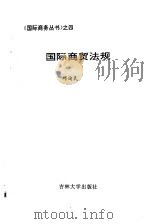
- 国际商贸法规
- 1995 长春:吉林大学出版社
-
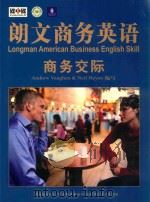
- 朗文商务英语 商务交际
- 北京:中国标准出版社
-
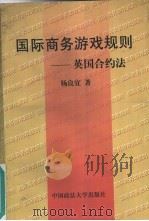
- 国际商务游戏规则 英国合约法
- 1998 北京:中国政法大学出版社
-
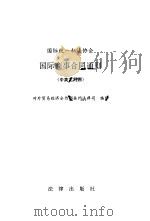
- 国际统一私法协会 国际商事合同通则 中文
- 1996 北京:法律出版社
-
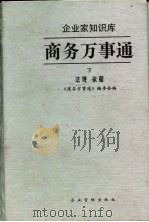
- 商务万事通 下 法规 依据
- 1997 北京:企业管理出版社
-
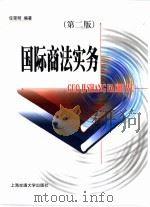
- 国际商法实务
- 1995 上海:上海交通大学出版社
-
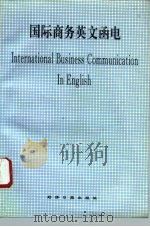
- 国际商务英文函电
- 1996 北京:经济日报出版社
-
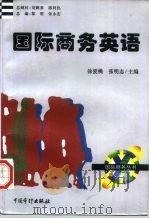
- 国际商务英语
- 1996 北京:中国审计出版社
-
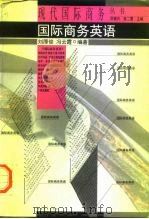
- 国际商务英语
- 1996 北京:中国青年出版社
-
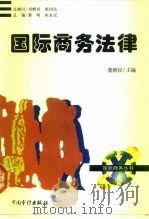
- 国际商务法律
- 1996 北京:中国审计出版社
-
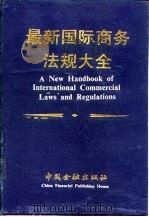
- 最新国际商务法规大全
- 1993 北京:中国金融出版社
-
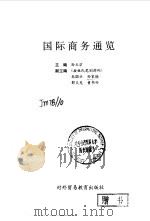
- 国际商务通览
- 1993 北京:对外贸易教育出版社
-
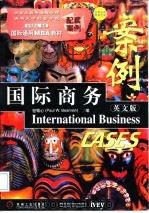
- 国际商务案例 英文版
- 1998 北京:机械工业出版社
-

- 国际商务谈判 原则、方法、艺术
- 1995 三联
-
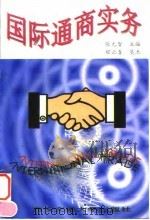
- 国际通商实务
- 1996 西安:西安交通大学出版社
提示:百度云已更名为百度网盘(百度盘),天翼云盘、微盘下载地址……暂未提供。➥ PDF文字可复制化或转WORD